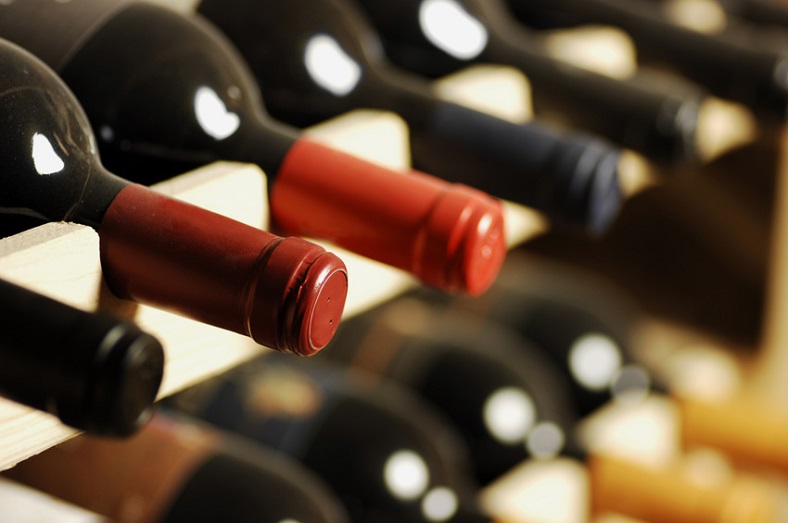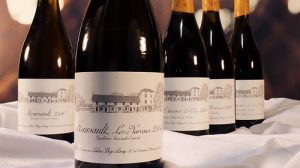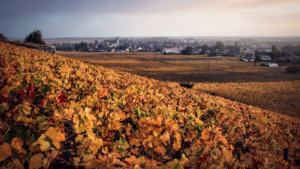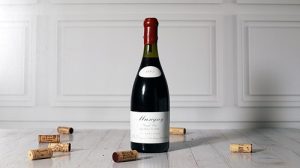
So you’ve decided that this year will be the one in which you start your wine collection. Brilliant! But just how should you go about it? How much to invest? How many bottles should it have? Here we’ve put together two examples of the kind of collection you could put together, either with a budget of €10,000 or €5,000. And all of these bottles are a good place to start.
Outline your aims
When starting a wine collection, you have to know what you would like to do with the wine. Would you like to open the bottles in a few months or years or would you like to find wines for ageing that you could give to your children when they’re older or open at a big occasion? Are you looking for just the kind of wine that you like or rising appellations and producers with the view to invest and potentially resell? Are you eyeing up an electronic cellar or are you one of the lucky ones with a natural cellar?
Once you have answered this important questions, it’s time to think about the number of bottles you’d like to buy and how much you’d like to invest. Below are two example cellars, each containing 180 bottles. They include a variety of regions and styles, and should get you feeling inspired for your own investment cellar (after all, you want a collection that reflects your own character!).
We recommend buying your cuvées in lots or cases of 12 bottles. This will allow you to taste them as time goes on (it’s a real pleasure to taste how a wine evolves), to discern their peak, to uncork several at once for a big occasion, to gift them to your nearest and dearest, and even to resell a few in a couple of years in case your preferences change. Recent vintages are also a wise choice for those putting together a cellar for long ageing.
And in terms of how to store them, the bottles need to be kept away from light and vibrations as wine is a fragile product. It requires a stable environment with 70% humidity and 10°C to 14°C. Wine can take some temperature changes but if it goes from one extreme to another, it can altern the quality of the wine. This is why its essential to have a good cellar – natural or electronic – to store it in.
Collection no. 1 – 180 bottles for €10,000
With this kind of budget, you can definitely head for the prestigious regions and some of their iconic producers. Bordeaux is usually considered your go-to for investing in wine thanks to its grands crus that are made to be aged. Plus, they tend to pair beautifully with gourmet dishes if you get to uncork one. From Pessac-Léognan to Pomerol and Margaux to Saint-Julien, you’re spoilt for choice, without this diluting the value of your choices.
Burgundy is also highly-coveted due to the ultimate rarity of its wine; estates are small and their produce is exclusive. Some of the region’s top climats are perhaps out of reach in terms of their exploding prices, but with the right advice you’re sure to find hidden treasures and premiers crus with less intimidating price tags.
The Rhône Valley is home to characterful wines with top cellaring potential, and they’ve long made for solid investments. The steep northern slopes are known for their concentrated Syrah, whilst to the south, Châteauneuf-du-Pape’s warm-pebbled earth promises wines of the finest calibre that turn out sublime after a decade in the cellar.
Aside from these must-have regions, there are others that have got circles of seasoned connoisseurs talking. The Loire is a promised land when it comes to fine white wine, Beaujolais and the Jura are at the heart of the natural wine movement, and Italy is a kingdom of powerful reds and ancient savoir-faire.
| WINE | VINTAGE | PRICE PER BOTTLE | QUANTITY | TOTAL PRICE |
| CHÂTEAU SMITH HAUT LAFITTE | 2021 | €130 | 12 | €1,560 |
| CHÂTEAU GISCOURS | 2021 | €56 | 12 | €672 |
| CHÂTEAU BRANAIRE DUCRU | 2021 | €52 | 12 | €624 |
| ALOXE-CORTON PREMIER CRU PHILIPPE PACALET | 2020 | €105 | 12 | €1260 |
| VOLNAY PREMIER CRU LE RONCERET TERRES DE VELLE | 2020 | €46 | 12 | €532 |
| GIVRY PREMIER CRU PETIT MAROLE FRANCOIS LUMPP | 2022 | €44 | 12 | €528 |
| POUILLY-VINZELLES LES QUARTS LA SOUFRANDIÈRE – BRET BROTHERS | 2017 | €55 | 12 | €660 |
| CHÂTEAUNEUF-DU-PAPE MONT-OLIVET ROUGE | 2020 | €45 | 12 | €540 |
| SAINT-JOSEPH LE PARADIS SAINT-PIERRE PIERRE ET JÉRÔME COURSODON | 2021 | €32 | 12 | €384 |
| SAVENNIÈRES ROCHE AUX MOINES CLOS DE LA BERGERIE VIGNOBLES DE LA COULÉE DE SERRANT | 2015 | €52 | 12 | €624 |
| MORGON JAVERNIÈRES LES IMPÉNITENTS LOUIS-CLAUDE DESVIGNES | 2023 | €70 | 12 | €840 |
| CORBIÈRES CAMPAGNÈS MAXIME MAGNON | 2021 | €36 | 12 | €432 |
| CÔTES DU JURA PINOT NOIR GUILLAUME OVERNOY | 2022 | €33 | 12 | €399 |
| VIN DE FRANCE MOELLEUX FRANCOIS CHIDAINE | 2016 | €27 | 12 | €324 |
| TOSCANE CAIAROSSA | 2020 | €57 | 12 | €684 |
Collection no. 2 – 180 bottles for €5,000
France’s top three regions should still be on your shopping list, whatever your investment budget. From Bordeaux, aim for well-made wines that aren’t wearing a grand cru label. In Burgundy and the Rhône, you’ll have some luck in the more modest appellations; the ones that aren’t so loud but show signs of good growth (and that’s what we’re here for!). Burgundy’s Côte Chalonnaise has a reputation on the rise, as does the Rhône’s Gigondas, both of which are rival their neighbouring big shots.
With €5,000 to invest, you can certainly be creative. Some of the lesser-known regions are worth exploring, and Languedoc springs immediately to mind. For the American critic Jeb Dunnuck, this southern spot is somewhat of a ‘rough diamond’. Then there’s the Beaujolais’ Fleurie appellation, where wine is more accessible and the producers are fighting for the recognition of their premiers crus. Montlouis-sur-Loire is another one to note, especially for its range of dry, sweet, and sparkling styles. Alsace is a pioneer of the biodynamic movement, if you’d like a cutting-edge bottle to get people talking. One last idea is Corsica, where many of the characterful cuvées are crafted from native grape varieties rarely (if ever!) found elsewhere.
| WINE | VINTAGE | PRICE PER BOTTLE | QUANTITY | TOTAL PRICE |
| LE PETIT HAUT LAFITTE | 2021 | €35 | 12 | €420 |
| CHÂTEAU SIRAN – Margaux | 2021 | €32 | 12 | €384 |
| CHÂTEAU DE FERRAND – Saint-Emilion | 2021 | €28 | 12 | €336 |
| HAUT CARLES – Fronsac | 2021 | €21 | 12 | €312 |
| GIVRY CLOS DE MORTIÈRES DOMAINE DE LA FERTÉ | 2022 | €32 | 12 | €384 |
| CHABLIS PREMIER CRU VAILLONS LOUIS MOREAU 2022 | 2022 | €30 | 12 | €360 |
| SANCERRE FLORES VINCENT PINARD | 2023 | €23 | 12 | €276 |
| CHÂTEAUNEUF-DU-PAPE MONT-OLIVET BLANC | 2020 | €37 | 12 | €444 |
| GIGONDAS AUX LIEUX DITS SANTA DUC | 2021 | €30 | 12 | €360 |
| PIC SAINT-LOUP CLOS MARIE LES MÉTAIRIES DU CLOS VIEILLES VIGNES | 2021 | €24 | 12 | €288 |
| MONTLOUIS-SUR-LOIRE PREMIER RENDEZ-VOUS LISE ET BERTRAND JOUSSET | 2019 | €33 | 12 | €396 |
| RIESLING CLOS SAND BARMES-BUECHER | 2021 | €27 | 12 | €324 |
| PATRIMONIO RAVAGNOLA NIELLUCCI CLOS MARFISI | 2019 | €24 | 12 | €298 |
| FLEURIE ORIGINES GREGOIRE HOPPENOT | 2022 | €16 | 12 | €192 |
| ALSACE GEWURTZRAMINER ALBERT MANN | 2022 | €21.50 | 12 | €258 |
If you’d like some more specific advice about choosing your investment wines, you can use our Tailor-Made Cellar service and we’ll help you choose the wines that fit your wishes.
And since your cellar is your own creation, why not explore our full selection?
If you’re looking for more information about storing your wine, you’ll find plenty of articles on our blog such as this one which discusses whether you should keep your wines in its wooden case.



